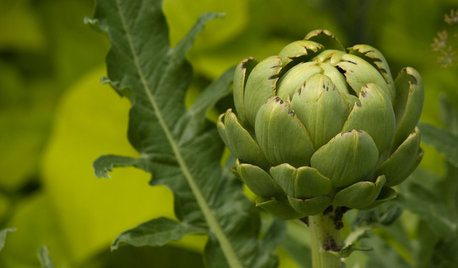To seed or not to seed
brieninsac
12 years ago
Related Stories

GARDENING GUIDESHow to Plant a New Lawn From Seed
Choose from more grass varieties and save money over sod by starting your lawn from seed
Full Story
CONTAINER GARDENS8 Easy Container Plants to Grow From Seed
Get beautiful blooms and herbs in summer by starting these choice garden picks from seed in spring
Full Story
GARDENING GUIDESSeeds or Seedlings? How to Get Your Garden Started
Growing delicious herbs and vegetables starts with knowing your goals and when you want to plant
Full Story
GARDENING GUIDESUnleash Your Guerilla Gardener
Toss some seed bombs around the yard for easy, beneficial plantings
Full Story
MOST POPULARSummer Crops: How to Grow Sunflowers
Savor snack-tastic sunflower seeds once the radiant blooms have faded — if the birds have saved you any, that is
Full Story
WINTER GARDENINGExtend Your Growing Season With a Cold Frame in the Garden
If the sun's shining, it might be time to sow seeds under glass to transplant or harvest
Full Story
GARDENING FOR BUTTERFLIESA Quick-Start Guide to Bird-Watching for Fun and Learning
Set out some seed and grab your field guide. Bird-watching is an easy, entertaining and educational activity for the whole family
Full Story
HOUZZ TVHouzz TV: How to Make and Plant a Veggie Box
See how to start edibles from seed, then transfer the seedlings to a box on stilts to make harvesting more fun
Full Story
GARDENING GUIDESYour Garden Is Stirring — Here’s What to Do in February
February is a good time to start seeds, shape up shrubs and watch for the earliest blooms. Here’s what to do in your part of the U.S. now
Full StoryMore Discussions








novascapes
susanlynne48
Related Professionals
Cary Landscape Architects & Landscape Designers · Concord Landscape Contractors · Fairview Landscape Contractors · Fort Worth Landscape Contractors · Melrose Park Landscape Contractors · Pleasanton Landscape Contractors · Red Oak Landscape Contractors · Richmond Landscape Contractors · Hawaiian Gardens Landscape Contractors · Independence Fence Contractors · Orange County Fence Contractors · Voorhees Fence Contractors · Boston Window Contractors · Seminole Window Contractors · South Laurel Window Contractorsbutterflyman
terrene
susanlynne48
christie_sw_mo
terrene
brieninsacOriginal Author